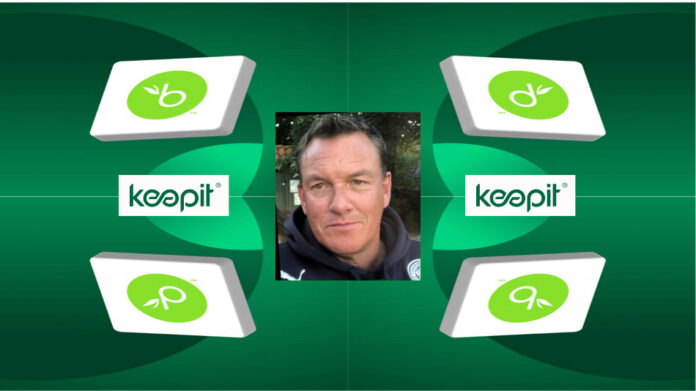SaaS app protector Keepit is using AI to increase the number of AaS apps it can protect.
The company provides an alternative to other SaaS app protectors, such as HYCU and Druva, by using its own data centers to store the backed-up data instead of AWS, Azure or other third-party public clouds. It told an A3 Tech Live conference that typical businesses and organizations have more than 100 SaaS apps in use, with them storing customer data and not protecting it. It’s aim is to backup hundreds of SaaS apps using its Domain-Specific Language (DSL) scheme.
This is a connector code writing concept in which, once the API access routes into a SaaS app are understood, the DSL framework is used to produce code linking Keepit’s snapshot model backup software facilities to the app. When a customer signs up for using Keepit to protect data inside their app account, then Keepit’s connector will access the app, using these APIs and copy the customer’s data.

Product Management Director Mark Groves said that, currently, Keepit protects 13 SaaS apps, up from 7 in April, one more soon, and it has a target of more than 100, hundreds even, by 2028. Its connector production rate needs increasing.
We were shown a 2025 timeline of Keepit’s SaaS app workload production;
- July – Confluence, Jira
- August – Okta
- October – Docusign Power apps – Power Automate, Okta
- November – Bamboo
- December – Miro
- January 2026 – GitHub, Okta
- February 2026 – ProService Management
Beyond these the possibilities include ChatGPT, GitLab, servicenow, quickbooks, Trello, HubSpot, authO, workday, Figma, Notion, Slack and others.
Keepit customers can vote their preferences for future SaaS app coverage on their Keepit website interface.
There are two main stages in the connector production process; workload API discovery and code writing. There may well be various workloads or modules inside a SaaS, such as Jira and ServiceNow, and a connector writer has to understand this and decide which ones, if not all, to protect.
Groves said API discovery was a big problem. It can take days, possibly weeks, for a human to discover all the API features and facilities available to users of a particular SaaS app. Keepit is developing an internal AI tool to help with this. He said it might be able to run for an hour or so and produce a full picture of the app’s API environment. This would then be fed into the DSL framework and a connector developed, again with AI help, more quickly overall.
Keepit is also adding an MCP (Model Context Protocol) interface to its system so that a customer, using a chatbot such as ChatGPT, could ask: “What is the state of my Okta backups?”
ChatGTP or another Large Language Model would then interrogate Keepit’s system, using MCP to connect to its public APIs, get the answer to the request, and present it back to the customer in natural language.
Groves said: “External LLMs can ‘talk’ to Keepit infrastructure.”
This would provide faster and deeper analysis of backup stats, easier audit log data summation, fast analysis of Keepit’s anomaly detection system. Generally, there would be better ways to assess and analyze the health and status of SaaS app data protection. The MCP feature is launching in preview mode in a week or two.
The company is also thinking about long-term preservation of its backup data, such as old SharePoint and Salesforce data. It could be valuable for AI analysis but has a low access rate, making it cold data. Offline tape would be the obvious target device technology. This could be a 2026 project.








